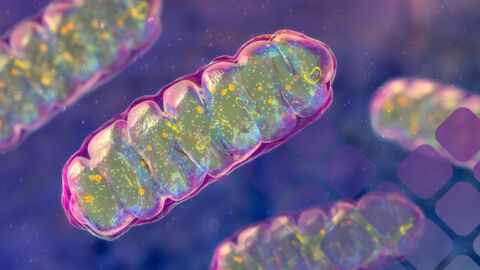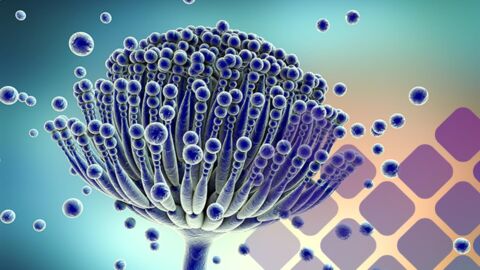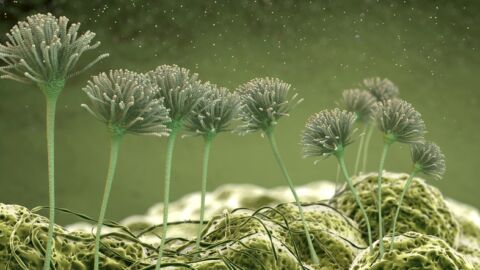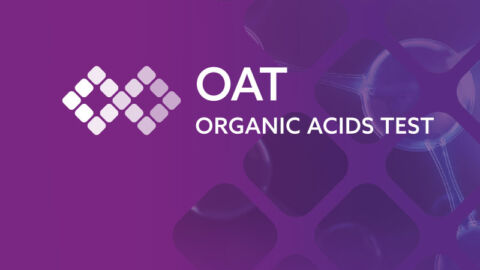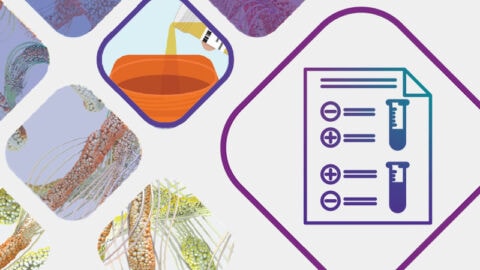Mosaic EDGE (formerly GPL Academy) has been educating practitioners for over 15 years on how to help patients heal through cutting-edge testing, research and protocols. In our recent 2-Day OAT + TOX Workshop, speakers extolled the virtues of comprehensive metabolic tests like the Organic Acids Test (OAT) and the MycoTOX Profile to help with difficult-to-diagnose patients.
The participants heard ways of how to implement these tests along with other diagnostic assessments, as well as effective treatment methods.
The following Q+A is a response to remaining questions Dr. Shaw was unable to answer during his presentation.
The material contained within this article is not intended to replace the services and/or medical advice of a licensed healthcare practitioner, nor is it meant to encourage diagnosis and treatment of disease. It is for educational purposes only. Any application of suggestions set forth in the following portions of this article is at the reader’s discretion and sole risk. Implementation or experimentation with any supplements, herbs, dietary changes, medications, and/or lifestyle changes, etc., is done so at your sole risk and responsibility.
Q: Are organic meats allowed to have mycotoxins?
A: Agriculture in the US have high standards for toxins. But realize organic food stuffs will have a higher risk of mycotoxins as there is no pesticides used in the growth/feeding of the food and thus more chance for mold growth and mycotoxin contamination.
Q: How does renal function influence accuracy of results of MyCoTOX & OAT? Will a patient with impaired renal function benefit from testing? Do you know the minimum kidney glomerular filtration rate needed in order to get accurate results? If they can’t use urine tests, do you recommend different test(s)?
A: If renal function impairs your client to concentrate their urine, then the sample will be rejected and you will get a notice of this. There isn’t a set GFR. If the urine sample is not able to be used, consider the IgE Mold Test.
Q: Can Ochratoxin cause seizures?
A: The potential is there as this is a neurotoxin. Click here for more info.
Q: When treating mycotoxins, do you see further immune suppression on labs – neutropenia, thrombocytopenia, increase in autoimmune markers etc.? Is this d/t “reactivation” of these mycotoxins throughout the body?
A: You can see changes on lab work depending on the patient and their reaction to the toxins. This is because toxins are not harmless when they are coming out of the cells until they are bound by binders and glutathione. The reactivation is more of a release into the blood stream from storage in the tissue and fat cells for ultimate detoxification and elimination.
Q: If there are markers indicating candida and C. difficile and extremely high Ochratoxin A and Mycophenolic Acid, what do you treat first or do you treat simultaneously?
A: You would want to treat simultaneously. If the immunosuppressive and immune toxins are not detoxed it will be difficult to fully clear the candida and C. difficile. Just be sure the clients are aware of the importance of timing of the their binders, antifungals, and other supplements.
Q: Would it be more beneficial to take the binders before bed so as to bind mycotoxins dumped into the GI tract from the liver during detoxification through the night?
A: This is a good strategy and usually easier for clients to remember and to take away from other foods/supplements/meds.
Q: Can you address how bleach is not recommended as it can cause spores from penicillium to explode?
A: Bleach can only kill mold on impermeable surfaces some of the times. It can clear the color of mold growth, but this typically grows back. It is not guaranteed to kill mold in all cases and cannot penetrated permeable and porous materials like wood. This could cause a false sense of security in a home that isn’t truly mold free.
Q: How significant is citrinin elevation if all other markers have been cleared?
A: This depends on the level of citrinin. Citrinin can come from a variety of molds and a significant elevation of this marker could be indicative of an ongoing mold exposure.
Q: Do you provoke prior to testing, be it GSH, infrared sauna, etc? Recommendations for provocation protocol? Patients to consider provoking/not provoking?
A: We do not recommend provoking for the mycotoxin test. The LC/MS measures the mass of the toxin alone, not bound to GSH. The GSH molecule attached to the toxin during provocation will hide the toxin from the LC/MS as the mass is now changed from what we are assessing. For this reason patients, should be off of GSH/NAC/ binders for 1 week prior to sample collection.
Q: Gliotoxin adds to the same reduced-sulfur enzyme systems known to be inhibited in Alzheimer’s disease. Which drugs have mycophenolic acid?
A: Myfortic and Cellcept
Q: Does Mycophenolic Acid help with high histamine intolerance?
A: Mycophenolic acid is an immunosuppressant and would more than likely be a contributor to the cause of a histamine intolerance.
Q: What lab will test immune suppressant drug for Mycophenolic acid? Is it a contaminant in the drug, or included as an ingredient?
A: There are certain drugs, myfortic and cellcept, that are made with mycophenolic acid as its active ingredient. It is used due to its immunosuppression activity. These drugs are used to reduce rejection of a new organ like a kidney due to immune rejection. I do not know of any labs that test drugs for mycophenolic acid.
Q: Could you please speak to treatment for children under 5? What are they able to take to treat mycotoxins
A: They can take binders, antioxidants, and antifungals just like adults. The dosing would need to be lower. The forms of the supplements/drugs would need to be child friendly so they can easily take them. Think of more powders and liquids over capsules.
Q: What percentage of mycotoxin in the urine is conjugated (phase-II) with glutathione, sulfate or glucuronic acid, and can you identify these by testing?
A: That percentage is difficult to determine as is varies from person to person, day to day based on detox capability. And, no, we do not identify these conjugates on the MycoTOX Profile.
Q: Has atrial fib been associated with mycotoxin exposure?
A: I do not have any direct research for a fib. But mycotoxins have been shown to be cardiotoxic. See more information here.
Q: You mentioned lactobacillus sp for fungal overgrowth/ mold – is there a favorite probiotic you have? Thoughts on spore forming probiotics like Megaspore for mold? also thoughts on serum derived immunoglobulins/SBI?
A: Spore probiotics can be helpful in inhibiting the growth of mold.
Saccharomyces boulardii has also shown efficacy in reducing mold.
Here are other studies of lactobacillus in the overgrowth of mold: HERE & HERE
Q: Is there literature to support the specific strain recommendation for probiotics: L. pentosus and L. beveris
A: This study is looking at the benefit of these two strains in adsorbing alflatoxin B1.
Q: Would Amoxicillin carry penicillium mold as it’s made from penicillin?
A: Penicillin and other derived antibiotics are made from a protein from penicillium mold. They do not contain the whole organism itself and no mycotoxins.
Q: A patient on OAT has a value of marker 2 (5-hydroxymethyl-2-furoic) 3037, and marker 4 the value is 759. Have you ever seen higher values?
A: Values of this level have been recorded. This isn’t a common occurrence, but it does happen.
Q: How does testing differentiate if the mold is colonized in the intestines or just passing through?
A: If it were passing through, we would see very minimal amounts of the furan compounds. When elevated this is evidence that the mold has colonized. To be 100% sure it has not passed on you can always retest and assess if it is still there prior to treatment.
Q: You mention 20-30 yrs, so if that much time has passed since the exposure is it unlikely for the person to be still colonized?
A: It is unlikely but the possibility is there. It is assumed that the body would have cleared the mold by then if the exposure was removed. But if someone hasn’t had a mold exposure in 20 years, yet has elevated mold markers, it could be inferred that this was from 20 years ago.
Q: Are antifungals the only way to kill off colonization? And can they be used at the same time as binders?
A: Antifungals are the most direct way to kill a colonization. Probiotics are a great adjunct. These can be used along with a binder but it should be taken 2 hours away from the antifungal and other supplements, meds, and foods.
Q: How do you treat sinuses directly if a patient is intolerant to nasal sprays and nebulized medications (severe discomfort, nose bleeding, severe pressure for days after)?
A: Oral antifungals and removal of moldy environment will help reduce irritation. This should be the beginning of the treatment. Detox with binders and antioxidants will reduce the toxic load. Slowly add in nasal sprays of saline to flush the area and then work up to antifungal nasal sprays. Go at the pace of the patient and their irritation.
Q: Are the treatment options in the order they need to be implemented on the patient infected by mold?
A: The treatment options listed are in order, yet after finding the source all these things should be implemented for full healing. They can be started simultaneously. But gauge your client and their ability to handle each part of the protocol. If they cannot get out of the exposure right away consider detoxing but holding off on the antifungals as the treatment will most likely need to start again after removal of the source.
Q: What about using NAC instead of glutathione?
A: If the person is making glutathione (assess pyroglutamic acid marker on the OAT) then NAC can be used. If they are glutathione deficient, consider investing in glutathione as the supplement of choice.
Q: Would you use the Antifungal if the patient does not have colonized mold?
A: Due to the lack of colonization testing for every mold it is difficult to determine if the person is or isn’t colonized even with the OAT. Because mycotoxins come from mold it is safe to assume mold is in the persons body if mycotoxins are being excreted, especially if they are no longer being exposed. If this is the case, or if the person plateaus in detox, antifungals are the next step.
Q: Are you saying you must use antifungal drugs with binders to rid the body of the mycotoxins that have colonized?
A: You must address the mold with antifungal therapy. It does not have to be drugs. You can use herbs and nutraceuticals.
Q: I have a case of an adolescent with autism. I have recently received the results of OATs with the results of markers of clostridium 15 and 18 elevated, elevated methylsuccinic, elevated ochratoxin and dihydrocitrine 1714, currently and after the oats presents constant fever, in sputum they found e coli. Other doctors have treated her with ciprofloxacin without being able to lower her fever. In this case, what do you treat first, clostridium, mycotoxins, e.coli?
A: If she still has a fever you may consider doing a blood culture for mold to be sure this isn’t a systemic infection. If not systemic, detox the mold toxins and address the bacterial overgrowths (clostridia/e. coli) with antimicrobials and probiotics (Core Biotic/ S. boulardii). Get her out of her moldy exposure as soon as possible and then begin antifungal therapy. For more support with treatment options contact customer service for a complimentary consult with one of our qualified GPL consultants to review her results and case.
Q: You skipped over Chlorophyllin. How does this work with treating myco?
A: The chlorophyllin directly binds to the mycotoxins especially aflatoxin. See more information here.
Q: Can we get references showing effectiveness of your list of treatments of Mycotoxins?
A: Here are a few references. Please see the Great Plains Laboratory website for additional resources. Also on your MycoTOX reports the PMID after the interpretations are articles from PubMed you can reference for treatment.
See the following links for research based options for treatment of mold: HERE & HERE
Q: What is the best timing for when you prescribe the antifungals and then the binders during the day. Biocidin dose is often TID, and the binder I have used BID. My understanding is Biocidin is best away from meals – this leaves little time to get the binder in. What times of day have you found is the best treatment?
A: You can consider taking the binder before bed, 2 hours after dinner, and/or first thing in the morning an hour prior to any other supplements/meals/ meds.
Q: What is a starting dose of Mg and Vit C (citrate?) to avoid constipation when using clays and charcoals for detox?
A: This depends on the clients and bowel history. But consider starting with 500mg of one and slowly adding the other agent at 500mg. then they can add more by 250-500mg until they have a proper bowel movement. Also check out these bowel supportive supplements: TruFiber and Oxy-Powder by New Beginnings Nutritionals.
Q: Could you clarify what foods (from where or in which states or countries) we can trust as having been tested for mycotoxins?
A: The FDA monitors food for mycotoxins. More research would need to be done on all other countries regulatory practices when it comes to monitoring mold.
Q: What is the recommended length of time to treat for mycotoxins once remediation has occurred?
A: At least 3-6 months, but treatment can take longer
Q: Where can we find dosing for children for MOLD/CIRS treatment? Supplements, rx, binders, etc.
A: New Beginnings Nutritional has many supplements for mold/CIRS and there is child dosing for many products.
Q: Do the charcoal, zeolite or bentonite clay or other binders not disrupt enterohepatic circulation similar to cholestyramine if taken in similar fashion? It was my understanding that all the binders had that capacity.
A: They work by binding bile in the GI tract as does cholestyramine. This stops the recirculation of bile through enterohepatic circulation. Bile production should be supported in long term use.
Q: How long is protocol for mold treatment before retesting?
A: 3-6 months
Q: Can a chronic mold infection be exacerbated with pregnancy? Can it be transmitted to the baby in utero? Or after through the breastmilk?
A: A chronic mold colonization and myotoxicity can be complicated by pregnancy. The mycotoxins can be transmitted to baby via placenta and breastmilk.
Q: What are the usual symptoms of mycotoxins? I know typical allergy symptoms, but I would guess digestive symptoms as well
A: Top symptoms are chronic sinusitis, constipation, diarrhea, bloating, gas, nausea, vomiting, inability to lose/gain weight, etc.
Q: You mentioned that only 1% of labs you see are negative for ochratoxin A…are you referring to first tests only and not follow up testing, or do you mean ALL testing including follow up labs?
A: All tests that are run by GPL
Q: Are lipomas in people also a sign of mold issues?
A: They have been documented in mold toxic patients: HERE
There is also evidence of lipomas filled with mycotoxins in mold exposed dog: HERE
Q: can the lymphomas go away using mycotoxin binders after stopping grains?
A: If mycotoxins and mold are the sole cause for the lymphoma it is possible that it could resolve after mycotoxin detox and mold colonization treatment. This cannot be guaranteed if there are other causes stimulating the lymphoma.
Q: If positive mycotox results for all family members living together aren’t shared, can you assume the source of mycotoxins is not the home but instead food or outside the home?
A: This could be implied but please be aware people all detox differently and release mycotoxins at their own rate and in their own pattern. The way to know for sure is by checking the home and culturing the molds growing there. If someone has mold toxins from an unidentified mold then you can assume it is from another source of exposure.
Q: If no fungal markers are elevated on OAT, would high Ochratoxin A (55) mean it came from penicillium most likely? Thank you
A: It could be assumed that is coming from penicillium but it could also be from aspergillus colonized in the lungs or nasal passages. Or it could be a combination of the 2 molds. Mold doesn’t have to colonize the GI tract to be an issue. Remember the OAT can only give GI colonization info. Cross reference with mold inspection of the moldy environment.
Q: Do you need to use a provoking agent before a mycotoxin test? Can a patient have difficulting detoxifying mycotoxins from their body that they may get a false negative test even if they are in symtomatic and living in a water damaged home
A: Mosaic Diagnostics doesn’t recommend provoking due to the nature of the LC/MS technology. It is specific to unbound toxins not GSH bound toxins. If there is concern about the patient not detoxing well, they can intermittently fast or exercise then night prior to collection to induce the release of toxins. Please remember this is not how the reference ranges were developed though. If someone is living in a water damaged building with visible mold a mycotoxin test is more confirmatory evidence of exposure and gives you a base line of toxic load. Similarly, with all lab testing, results should be taken in consideration with all the other information you have about the client.
Q: If you have a Fibro, Autsitic, ADHD or CFS patient would you start with OAT and Mycotox right away or wait to see what shows up on OAT first?
A: If you have evidence of a past or current mold exposure do both panels. If not start with the OAT and let it guide you to what tests to do next.
Q: Can you clarify–in pt w/ aspergillus colonization improved on nystatin–is the point that nystatin treats gut, doesn’t get into blood stream, therefore is treating aspergillus in gut and eliminating the colonization, which is in the gut, is the explanation for improvement
A: Correct-aspergillus markers reducing when nystatin is given, provides us the conclusion it was in the gut, since nystatin is not absorbed through the mucous membranes or the GI tract.
Q: I have many patients with multiple lipomas, do you suppose this could be a similar process to what happens in dogs?
A: It’s one possibility. You might find this article helpful; HERE
Q: Can the mold the dog is exposed to, expose the family to that mold?
A: There is the thought that mycotoxins can be in the dog’s fur, and then therefore one may be exposed in that manner. If that is true, there are dog washes that claim to neutralize them.
Q: Is chronic hepatitis and cachexia without symptom (negative autoimmune Hep A, B, C, no neurological issue, no fatigue) is it worth to check Mycotoxin?
A: If their clinical history alludes to mold in their environment, absolutely. Mycotoxins are known hepatotoxins, and Chaetomium can cause unintended weight loss.
Q: I like the fact we are addressing when people are living in food insecurity there’s a tendency to still eat food contaminated by mold. How would you respond to someone who says- “Oh I just removed the moldy part of the food and use the rest in my cooking?”
A: It would be advised against since a lot of mycotoxins are heat resistant.
Q: Just an FYI, I did a consult with Mosaic Diagnostics for one of my pts mycotoxin test and was told that a low level did not matter. Not true according to Dr. Shaw.
A: It is HIGHLY dependent on the entire clinical picture and situation.
Q: Would you please provide the citation for the recent study published in Nature you discussed about autistic children & their mothers found to have high antibodies to a mold?
A: HERE
Q: dosing guidelines for itraconazole and sporonox? adult and peds please
A: Sporonox: HERE
Intraconozole: HERE
Q: what are some antifungals that are non-prescription that a nutritionist can provide as a protocol?
A: The literature supports utilizing caprylic acid to target yeast and mold. Combination antimicrobials are best to prevent resistance. A recent article written by Dr. Brown illuminates other botanicals that function as antifungals. HERE
Q: any recommendations for collecting urine from non-toilet trained patients?
A: There are bags that fit over the penis that can be requested from the lab to help with urine collection. The Chinese method for potty training can also be a helpful tool.
Q: What is recommended to prevent further mycotoxin infection after successful treatment?
A: With regards to the environment post remediation, ensuring low humidity, areas kept clean and dust free, air purifiers suitable for filtering mycotoxins, sufficient lighting, increased air flow, and to be very cautious of water leaks. For the body, keeping the immune system and points of entry into the body (skin, nasal, mouth, and GI tract) strong and supported, as well as, supporting the body’s removal of toxins.
Q: Is there a test we can run to determine if the gastrointestinal tract is colonized?
A: The Organic Acid Test (Markers 2.,4.,5., and sometimes 6.)
Q: how do you know if the gastroinstenial tract is colonized? would this be something to do a stool test for? or are their spceific symtoms that a patient would be experiencing
A: The OAT can help determine if the GI tract is colonized (looking at Markers 2.,4.,5., and sometimes 6) . To date, no stool test to my knowledge can test for mold. Symptoms typically present similar to yeast overgrowth.
Q: Does the OATS show colonization of mold in the body vs. mycotoxin exposure?
A: The OAT can determine if mold is colonized, but does not always indicate mycotoxin exposure. If a colonization is present, one can assume there are mycotoxins, but it is not always evident mycotoxins are present based on the OAT alone when no mold markers are elevated. There are other markers on the OAT that can perhaps elude to mycotoxins, but it is best to run the mycotox if there is suspicion of mycotoxin exposure to get confirmation.
Q: Would an OAT on a dog be accurate or relevant the same way as the MycoTox test?
A: If you can apply the differences from human metabolism to canine metabolism, then potentially you could. I know of one veterinarian that utilize the OAT in their practice.
Q: What are good antifungals for Ochratoxin A and Mycolphenolic Acid?
A: Mycotoxins are not always indicative of colonization. The OAT should be done concurrently to confirm colonization. If high values are found for the specific aspergillus markers on the OAT, use of antifungals is warranted. If colonization is confirmed, nystatin, intraconozole, and/or caprylic acid or GSE have been shown to decrease aspergillus in the gut.
Q: A patient tested for Myctoxins and it showed the Ochratoxin A is 17.87 and Mychophenolic Acid is 4397 – what would be the appropriate protocol for this patient?
A: It would probably be best to set up a consultation with the lab to further discuss this.
Q: since there are no food restrictions prior to mycotox collection, but food restrictions prior to OAT, can you please explain why those foods affect the OAT, but not the mycotox profile.
A: The OAT is measuring metabolic metabolites produced by humans and other organisms in the body. Arabinose is the main metabolite that is noted to be directly influenced by consuming specific foods. To ensure elevations are contributed to yeast overgrowth rather than food components, foods that contain arabinogalactans (which are partly composed of arabinose) should be avoided 48 hrs prior to testing. On the other hand, the mycotox test is measuring the specific toxin in the urine, and is not influenced by food components.
Q: Do you recommend a GSH challenge for 5 days prior to collecting the urine like Dr Nathan suggests?
A: No. The ranges are based on people who were NOT provoking, and therefore if a provocation was administered, the ranges are no longer comparable. Furthermore, when GSH is conjugated with the mycotoxin, it changes the structure of the compound, and due to the specificity of LC/MS, it reduces the ability for the mass spec to measure it.
Q: Have you used medical ozone to remove the fungal infection?
A: No, but some practitioners have.
Q: if oxalates can form from intake of higher phenol foods, and estradiol is a phenol, could prescription HRT/estradiol therapy contribute to oxalates, histamine intolerance?
A: There is data that indicates that higher levels of estradiol in the system correlates with less calcium oxalate stone formation (HERE), and that estrogen intervention may actually decrease the risk of stone formation by lowering urinary calcium and calcium oxalate saturation (HERE)
I am not sure about histamine intolerance.
Q: did Dr. Shaw say a level about 50% is notable for toxic panel?
A: Above the 95% in a toxic panel is considered clinically significant.
Q: Does this include an interpretation or is there an option to hire someone to interpret?
A: The laboratory provides a free consultation with each test, to help with interpretation of the results.
Q: Is there an affordable lab that you would recommend for testing water from our taps for some of these chemicals?
A: www.watercheck.com- National Testing Laboratories Ltd.
Q: Do you know if there is any company producing phthalate-free tubing for IV treatments, reverse-osmosis water filtration systems,?
A: Not to my knowledge. Sounds like a good investigation.
Q: Have you heard of Relax Sauna brand, in which you sit inside but your head is outside? Wondering if still effective.
A: Inducing sweating is what is of most benefit, so anything that will accomplish this will be helpful.
Q: breast implant patients and saunas ok?
A: Dependent on status of implants, and tolerance.
Q: Are hot baths and/or exercise an option to saunas?
A: Yes. Hot baths tend to be used for heat-sensitive patients, and some people can generate a significant amount of heat during exercise.
Q: Would the IR Sauna wraps be a good option?
A: As long as the patient is able to increase body temperature and sweat, it should work.
Q: Dr. Shaw. I have heard that IgG food allergy testing is not valid because if the person has leaky gut, then they will react to many things. Is this the case? Or you may show high levels in the foods you often eat. This happened to me. I found it ironic that all the foods that showed up were foods I ate often in my diet. How reliable is a mod/high IgG response in terms of correlation with patient improvement when said foods are eliminated?
A: Validity is not what is in question, but rather the potential reasoning for the inflammation. Often when you improve the gut (and the immune system), food intolerances improve. As it relates to your question with increased levels with foods that are often eaten; perhaps there were more food antigens to bind to. In other words, inflammation was being caused by that food, but with more food antigens present, the peaks were higher on the results. There is a significant amount of data that shows relief of symptoms with elimination of high reactive foods, both clinically, and in the research literature.
Q: also I need information on the email for functional medicine rounds again please
A: HERE
Q: What could be the source of the high exposers to:
3-hydroxypropylmercapturic acid (3-HPMA), Diphenyl phosphate, Diethyl phosphate (DEP), 2-Hydroxyisobutyric Acid (2HIB) MTBE/ETBE, N-acetyl(3,4-dihydroxybutyl) cysteine (NADB).
Patients are older children, grew up on a mountain and drink bottled Fiji water and Arrowhead water, family is consumer conscientious about chemicals in products, and uses EWG shampoo/cleaners and cleaning products. Father drives diesel truck. Consumed very littler sugar or processed food. They also burn wood for six months a year for many years.
A: It is probably best to discuss this with a consultant.
Q: I am going to run your new IgG tests but I ran IGG testing through a different company and my kids showed high IGG to almost all of the 150 foods. Many of the foods they have never eaten. Thoughts?
A: It would be important to look at the immune function if a reaction is that high with Mosaic Diagnotics’ IgG testing as well. Something to also consider is the DPP-IV enzyme levels.
Q: What is the relationship between blood testing for milk allergy and results from IgG testing? Could the traditional lab corp serum test show no problem, but the IgG food allergy be positive?
A: If you are referring to the IgE milk test they have, the two are not necessarily comparable. One can have an IgG reaction and not an IgE, or vice versa since they are two different type of immunoglobins, creating two different reactions in the body. If you are referring to their IgG test, it seems limited with only looking at milk, especially since the epitopes vary for dairy sources because of food processing manipulating the proteins, potentially yielding varying results for dairy- based foods.
Q: If someone shows as having a food sensitivity on the test, is it typically something that will be present for life? Meaning if they eat the food say ten years later the body will react?
A: Not necessarily. Depends on why the immune response is occurring.
Q: doesn’t food change molecularly when cooked? I have people that react to a food raw but not cooked.
A: Yes; proteins can change, depending on the method of cooking. If it is higher heat and/or more acidic than the digestive environment, then it could manipulate the proteins enough to not cause a similar reaction. Also, consider the changes in fiber and nutrient release/degradation with cooking too.
Q: I know that Dunwoody Labs looks at IgE, IgG, IgG4 and complement. They claim that complements reaction is very important to reduce the elimination. Why does your test give more data or can you clarify the differences?
A: Mosaic Diagnostics measures IgG1-4 for a more specific response.
This article can provide more details. HERE

